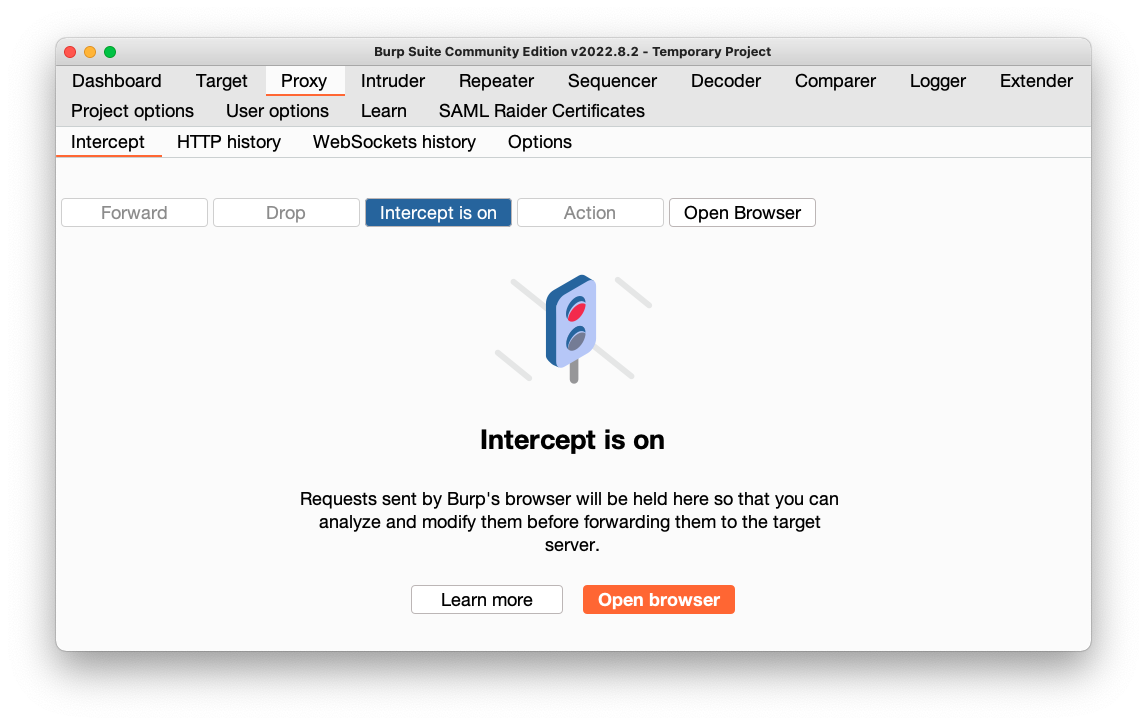
Use Android 5.1Android 8 no longer allowsuser-defined TLS certificates. |
In a Web browser, go to https://portswigger.net/burp/communitydownload
Download the Community Edition and install it.
Ubuntu Users
If you are using Ubuntu, execute these commands:You should see the name of the downloaded file, which should be something like burpsuite_free_v1.6.01.jar. Use that name in the commands below:
Warning
If you run Burp in Kali, it seems not to properly export the certificate and Chrome on Android refuses to accept it. It can be imported but Chrome gives an error when opening secure pages anyway.We succeeded by running Burp directly on the host system instead (Mac OS).
In the next page, click the Start Burp button.
The main Burp window opens, as shown below.
Click the Proxy tab. Click the Intercept sub-tab.
The third button says "Intercept is on", as shown below.

On the Proxy tab, click the Options sub-tab.
In the central box, click the Interface address to highlight it, as shown below.
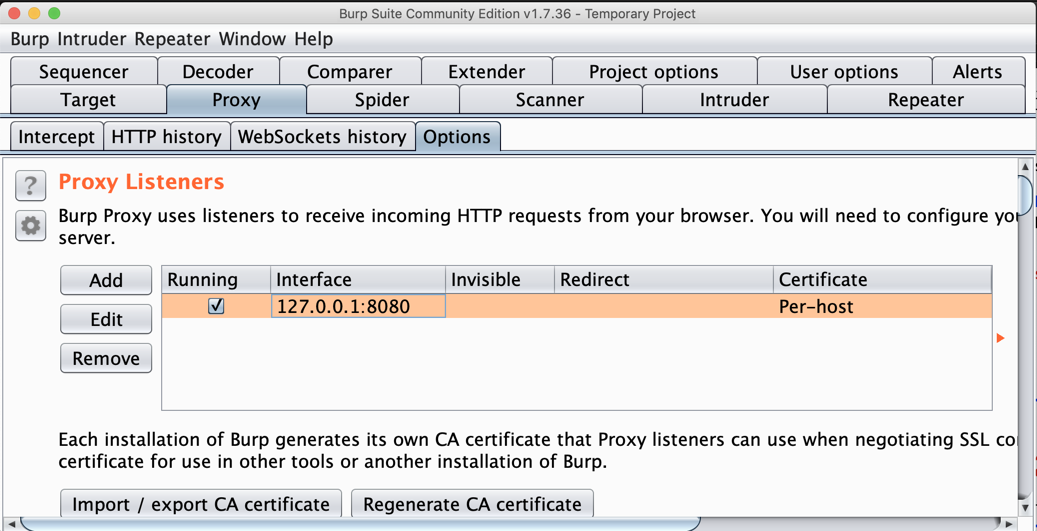
On the left side, click the Edit button.
In the "Edit proxy listener" box, click the "Specific address" button, and select your computer's IP address that is used to connect to the Internet, as shown below.
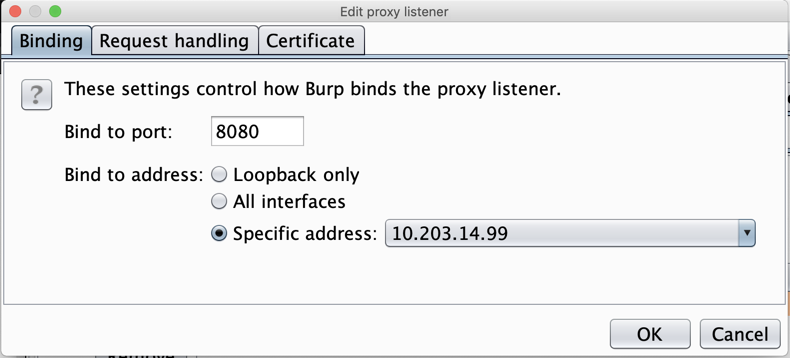
Click OK.
Burp shows a proxy listener on your IP address and port 8080, as shown below.
Make a note of this address--you will need it below.
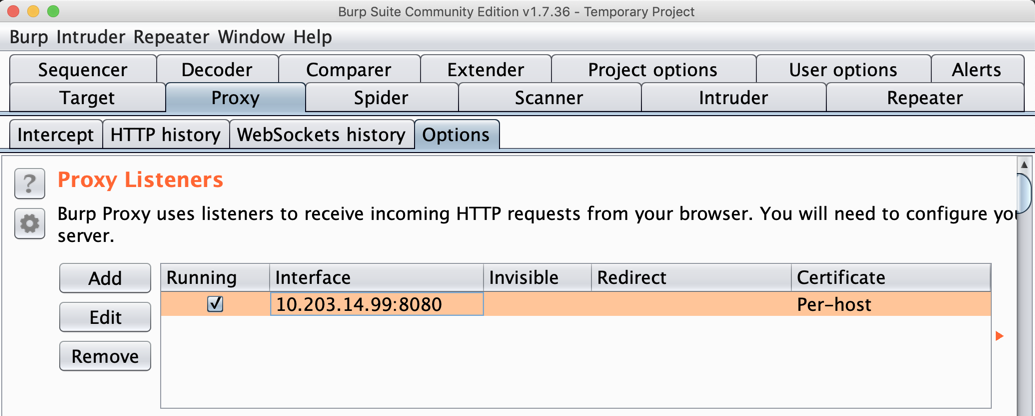
From the Android home screen, click and drag up to show all apps.
Click Settings, which is outlined in green in the image below.
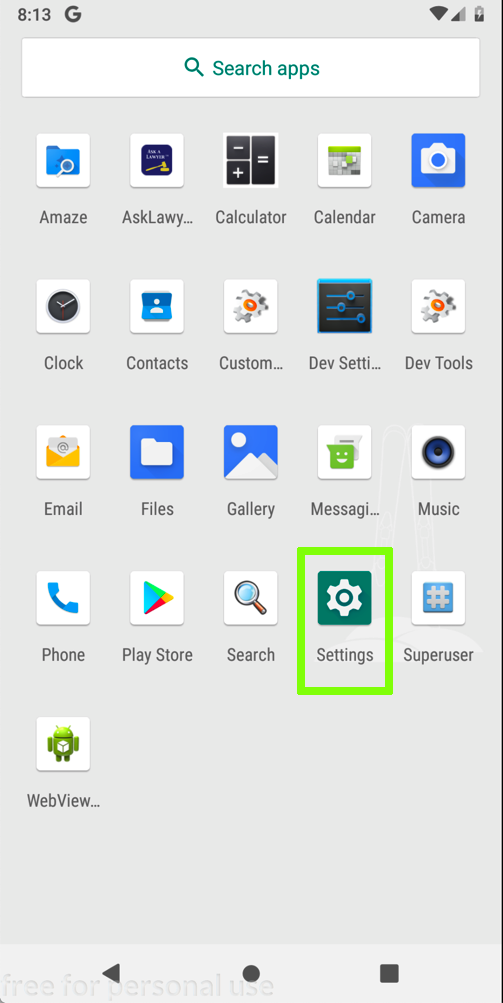
In Settings, click "Network & internet".
Click Wi-Fi.
Click AndroidWiFi.
Click Advanced.
In the "Network details" screen, at the top right, click the Pencil icon, outlined in green in the image below.
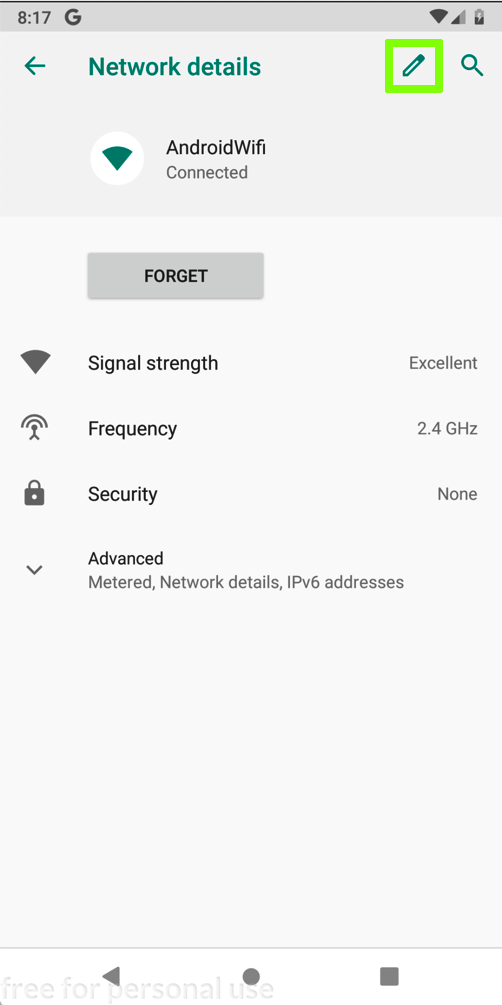
In the "AndroidWifi" box, in the "Advanced options" row, click the down-arrow.
In the "Proxy" field, click the down-arrow.
Click Manual, which is outlined in green in the image below.
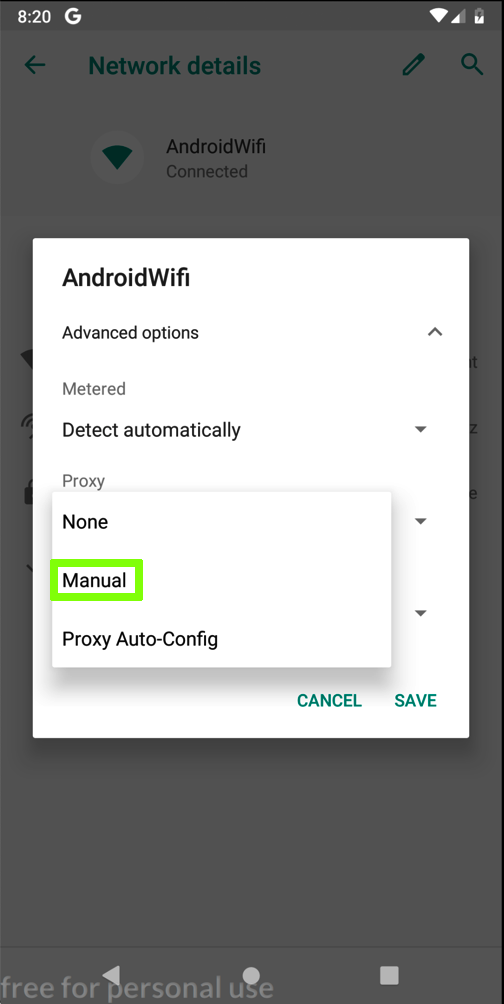
Enter the IP address and port number of the Burp proxy listener, as shown below.
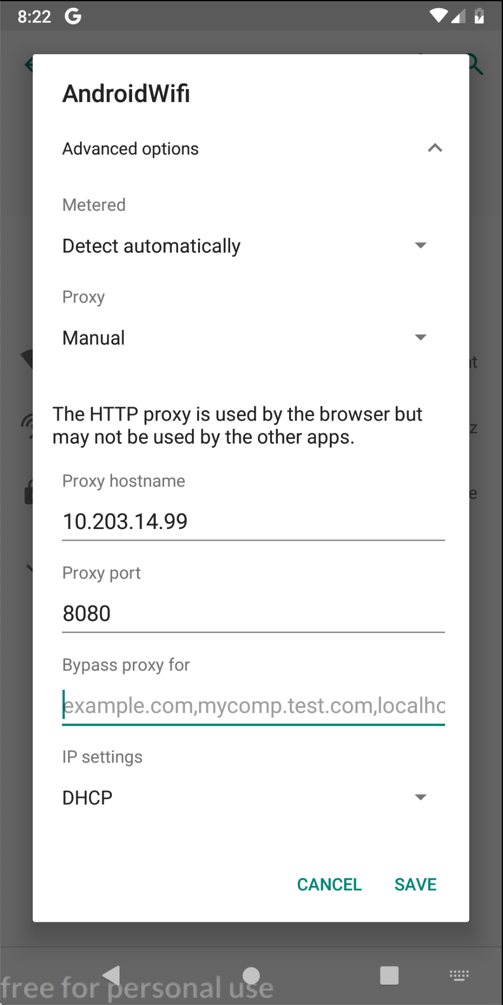
On your Android device, click SAVE.
At the bottom center of the device, click the round Home button.
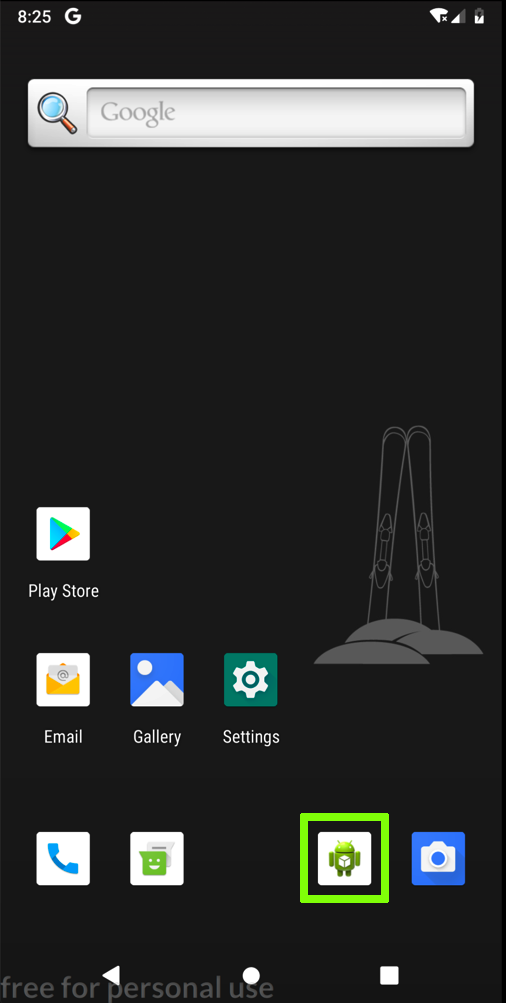
In the Browser, and go to
A "Hackazon" shopping site opens, as shown below.

M 103c: Server (10 pts)
In Burp, on the Proxy tab, click the "HTTP history" sub-tab.Scroll down and the GET request that loads hackazon.samsclass.info as shown below.
Click the GET request. In the lower left pane, click Response.
Find the text covered by a green box in the image below. That's the flag.
https://samsclass.info The browser does nothing, as shown below. It's a lousy browser, which is why we installed Chrome.
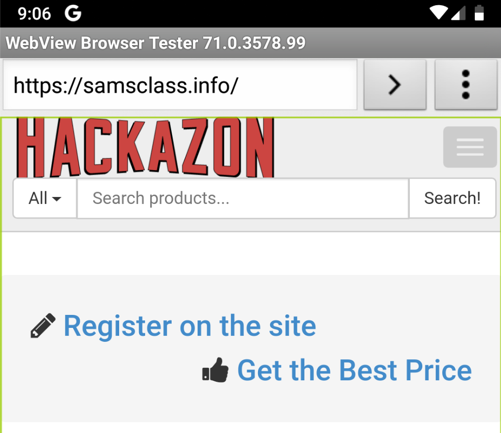
When you see the "Sign in to Chrome" page, click "NO THANKS".
In Chrome, go to
A warning message appears, saying "Your connection is not private", as shown below. Notice the specific error shown: NET:ERR_CERT_AUTHORITY_INVALID. This happens because Burp is performing a man-in-the-middle attack with a self-signed certificate.
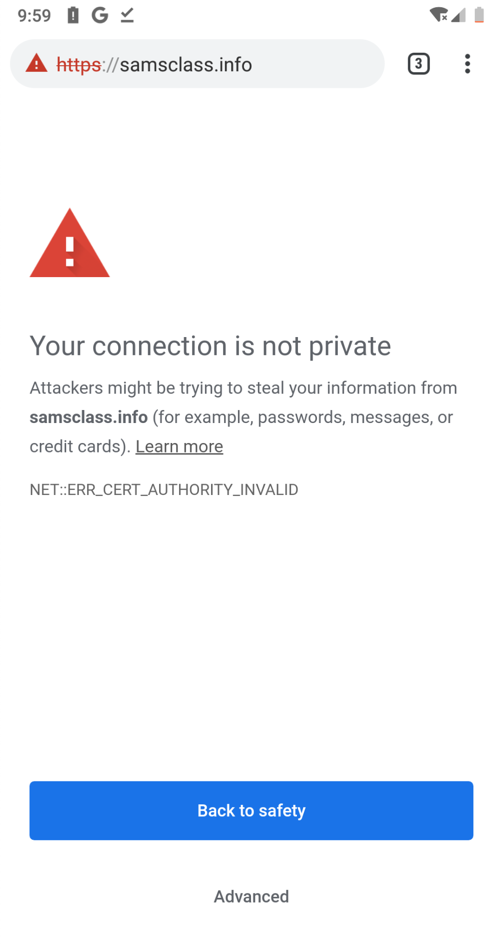
At the bottom center of the device, click the Home button. Open Settings.
Click Security, as shown below.
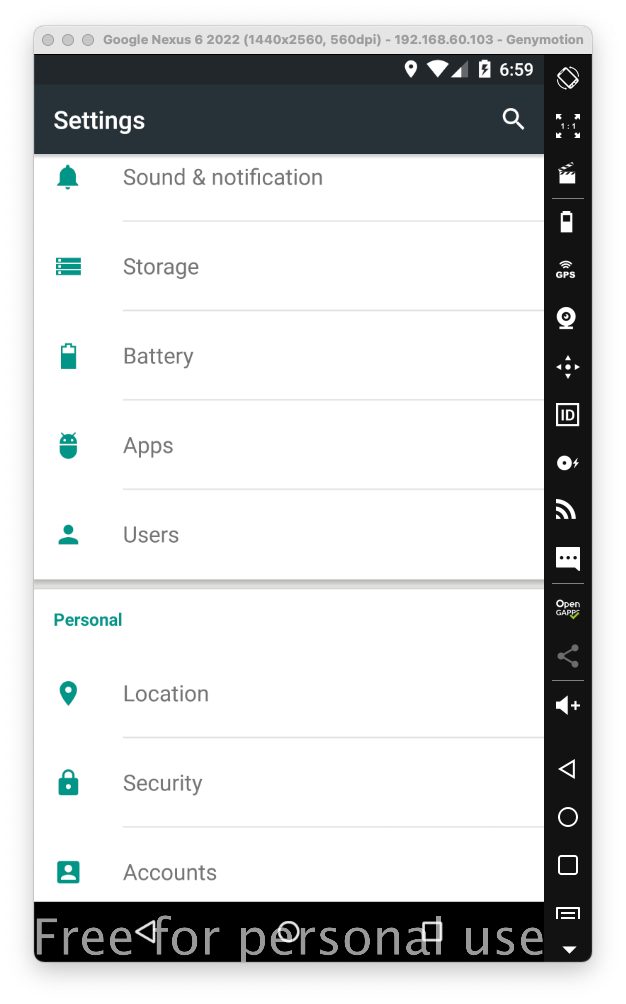
In the Security screen, click "Screen lock".
In the "Choose screen lock" screen, click PIN.
Enter a simple PIN you can remember, such as 1234, twice. Click DONE.
We want to add PortSwigger as a trusted certificate authority to get rid of these messages.
In Burp, click the Proxy tab.
Click the Options sub-tab.
Click the "Import /export CA certificate..." button.
In the "CA Certificate" box, in the Export setion, click the "Certificate in DER format" button, as shown below.
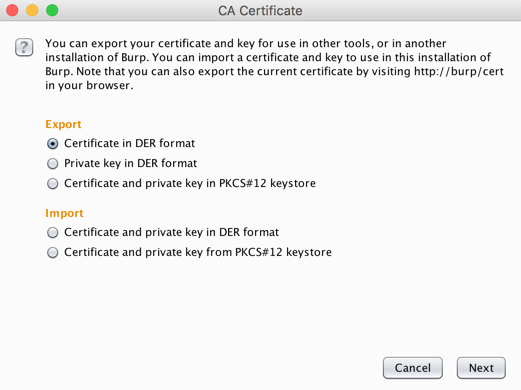
Click Next.
On the next page, click the "Select file..." button. Navigate to a folder you can find, such as your Desktop.
Give the file a name of portswigger2022.cer, as shown below.
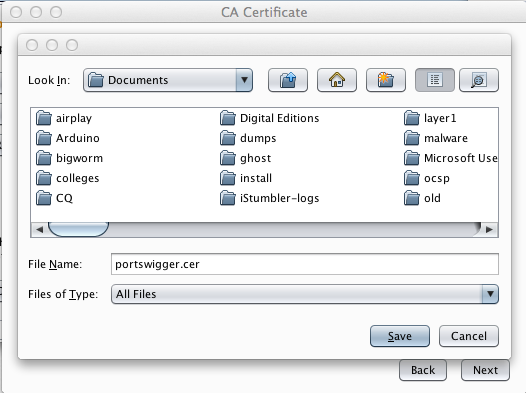
Click Save.
Click Next. Click Close.
A message appears, saying "Files successfully copied to sdcard/Download", as shown below.
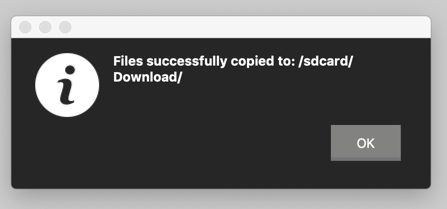
Click OK.
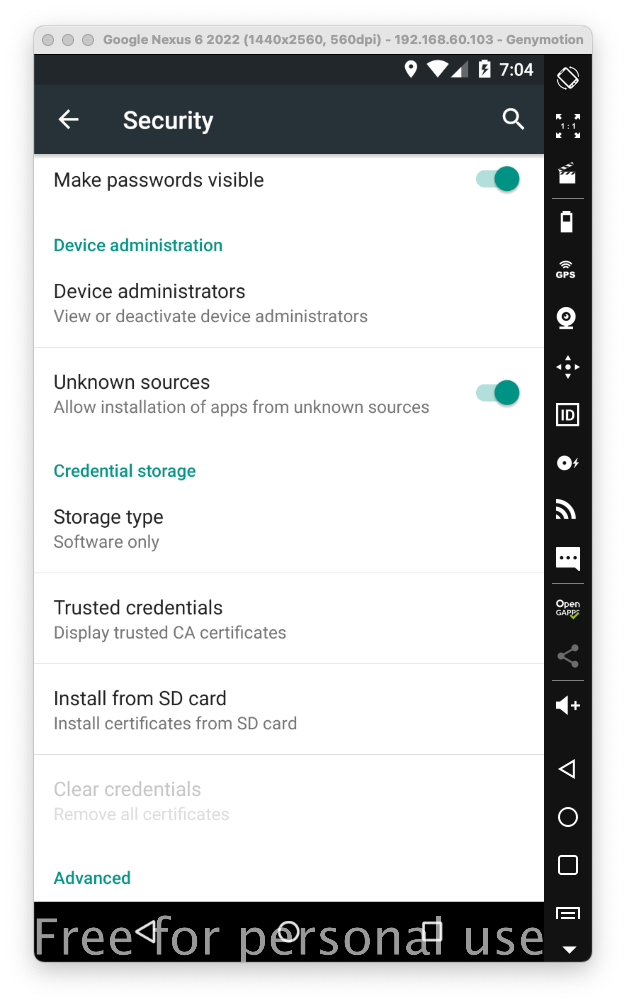
In the next screen, click "Internal storage". Click Download.
In the Downloads window, click portswigger2022.cer, as shown below.
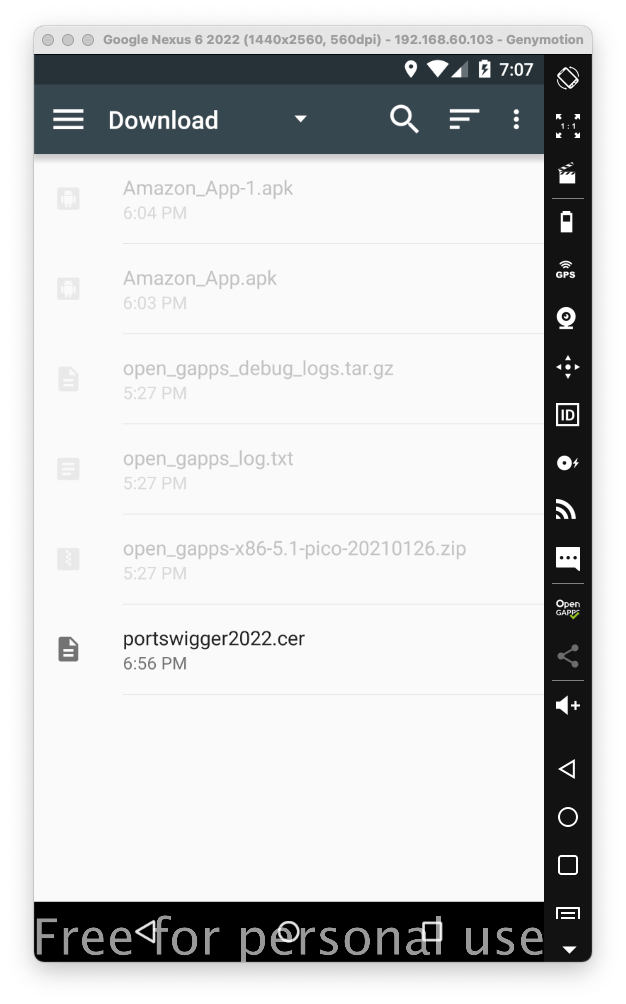
Enter your PIN.
Enter a name of portswigger, as shown below, and click OK.
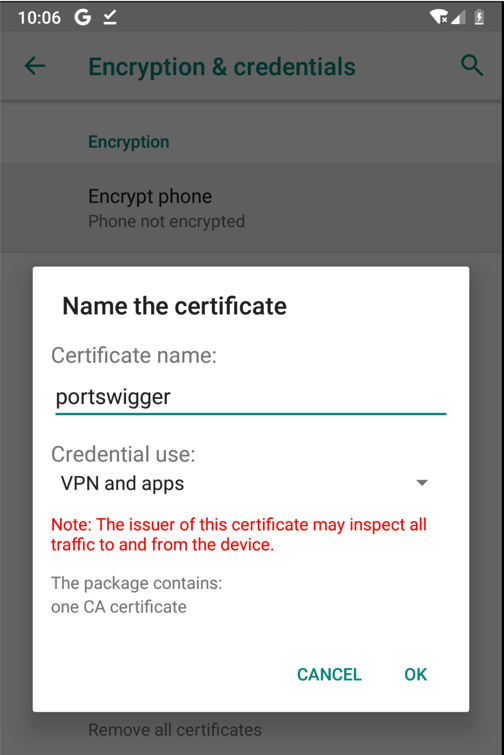
https://samsclass.info The page opens, as shown below.

Find the line that shows the https://samsclass.info page loading, as shown below.
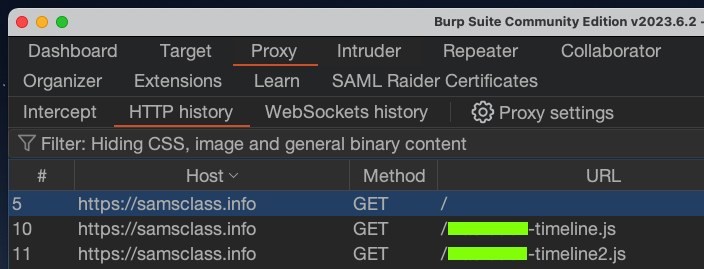
M 103d: Filename (10 pts)
Find the text covered by a green box in the image above. That's the flag.
From the Android home screen, click the circle at the bottom center.
Open Settings.
In Settings, click "Network & internet".
Click Wi-Fi.
Click AndroidWiFi.
Click Advanced.
In the "Network details" screen, at the top right, click the Pencil icon.
In the "Proxy" field, click the down-arrow.
Click None.
Then click Save.